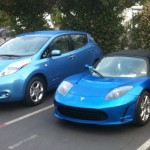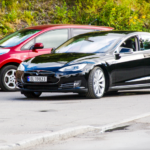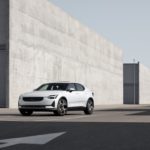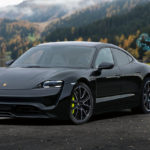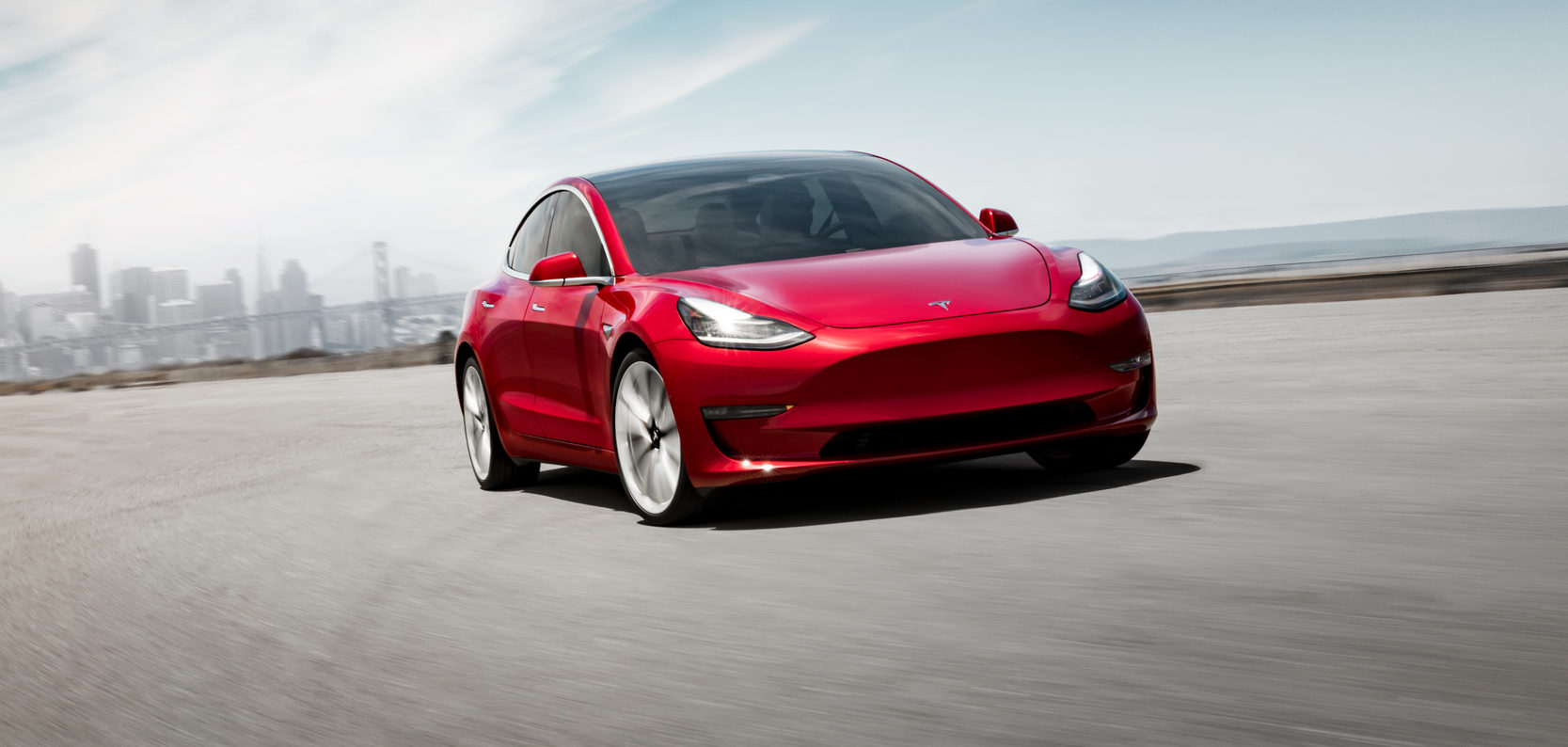
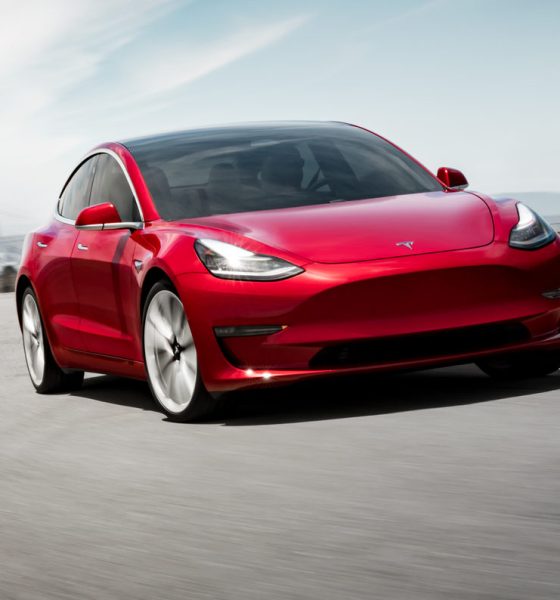
News
Tesla is ending the era of half-hearted, compliance electric cars
Carried forward by the momentum of electric vehicles like the Tesla Model 3, upcoming EVs from experienced carmakers such as Porsche and Volvo are showing a trend in the auto industry — from this point on, the automotive market will be fought with electric cars, and there will be no turning back.
It might be difficult to imagine today considering the success of the Model 3 and the influx of electric vehicles from veteran carmakers, but there was once a time when EVs were mostly half-hearted attempts whose primary purpose was to meet the mandates set by the California Air Resource Board (CARB). The EVs produced during this period even earned a very appropriate moniker — compliance cars. Among these were the Ford Focus EV, GM’s Spark EV, the Fiat 500e, the RAV4 EV, and the Honda Fit EV, all of which were adequate vehicles, but are costly and compromised in range and cargo compared to their gas-powered counterparts.
During the height of the compliance car era, some companies opted to pursue a different path. Among these is Nissan, whose all-electric vehicle, the Leaf, was sold across the United States. The Leaf would go on to be one of the best-selling EVs in the market. Tesla also saw a lot of growth in but a few years, bringing to market the Model X SUV and the Model 3 midsize sedan. Just like the Leaf, Tesla’s electric cars sold well, finding a strong following among consumers for who prefer the company’s no-compromises approach when it comes to the safety, performance, tech, and features of its vehicles. Tesla’s momentum never really stopped, as seen in the earlier-than-expected launch of the $35,000 Standard Model 3 recently.
It could be said that Elon Musk’s tenacity and his stubborn refusal to give up when faced with large challenges is a reason behind Tesla’s success. With Tesla all but proving that there is a demand for well-designed electric vehicles, other carmakers followed suit. In 2018 alone, several electric cars from established manufacturers were released, headlined by the Jaguar I-PACE, the Audi e-tron SUV, and the Mercedes-Benz EQC. Unlike compliance cars of years past, these vehicles were hyped as essential entries into their respective companies’ shift towards electric mobility. Nevertheless, some of these vehicles, such as the EQC, still carried over much of its gas-powered siblings’ characteristics, such as a front trunk full of components.
More recent electric vehicles from experienced carmakers seem to be better-designed. The Polestar 2 from Volvo, for one, proved impressive during its launch. With its dual motors that produce 408 hp, its deep integration of Google’s Android software, and a starting price of $45,000, the Polestar 2 can serve as an alternative for buyers who do not wish to purchase a Model 3. The Porsche Taycan, which is expected to be unveiled later this year, was also carefully designed from the ground-up as a high-performance electric car. Porsche has fully committed to electrification, with the company retiring its diesel lineup in favor of greener options. In the same way that the Polestar 2 can be an alternative to the Model 3, the Taycan can also be the perfect vehicle for buyers who wish to purchase a large sedan that is not a Tesla Model S.
- Porsche Taycan rendering via TaycanForum.com
The Polestar 2 and the Porsche Taycan. (Photo: Polestar, TaycanForum.com)
If there is anything more that experienced automakers can do, it is to produce their premium electric vehicles in large quantities. Porsche, despite being a low-volume carmaker, is adopting this strategy, with the Taycan’s initial 20,000 a year output being changed to 40,000 per year. Volvo is planning to produce a decent number of Polestar 2 every year as well, with the company planning on an output “north of” 50,000 units per year. This is something highlighted by Elon Musk in a tweet earlier this year, when he noted that Tesla’s competition is “not the small trickle of non-Tesla electric cars being produced, but rather the enormous flood of gasoline cars pouring out of the world’s factories every day.”
Elon Musk will be the first person to remind anyone that Tesla’s primary goal has always been to accelerate the advent of sustainable transport. Considering the influx of electric vehicles from veteran carmakers, as well as seemingly solid entries from younger companies like Rivian, it appears that finally, after years of swimming against the current, the auto industry is finally getting on board with Tesla’s mission. For Elon Musk, at least, it appears that his Master Plan, which outlines his vision for sustainable transportation, is coming together.

News
Tesla launches crazy Full Self-Driving free trial: here’s how you can get it
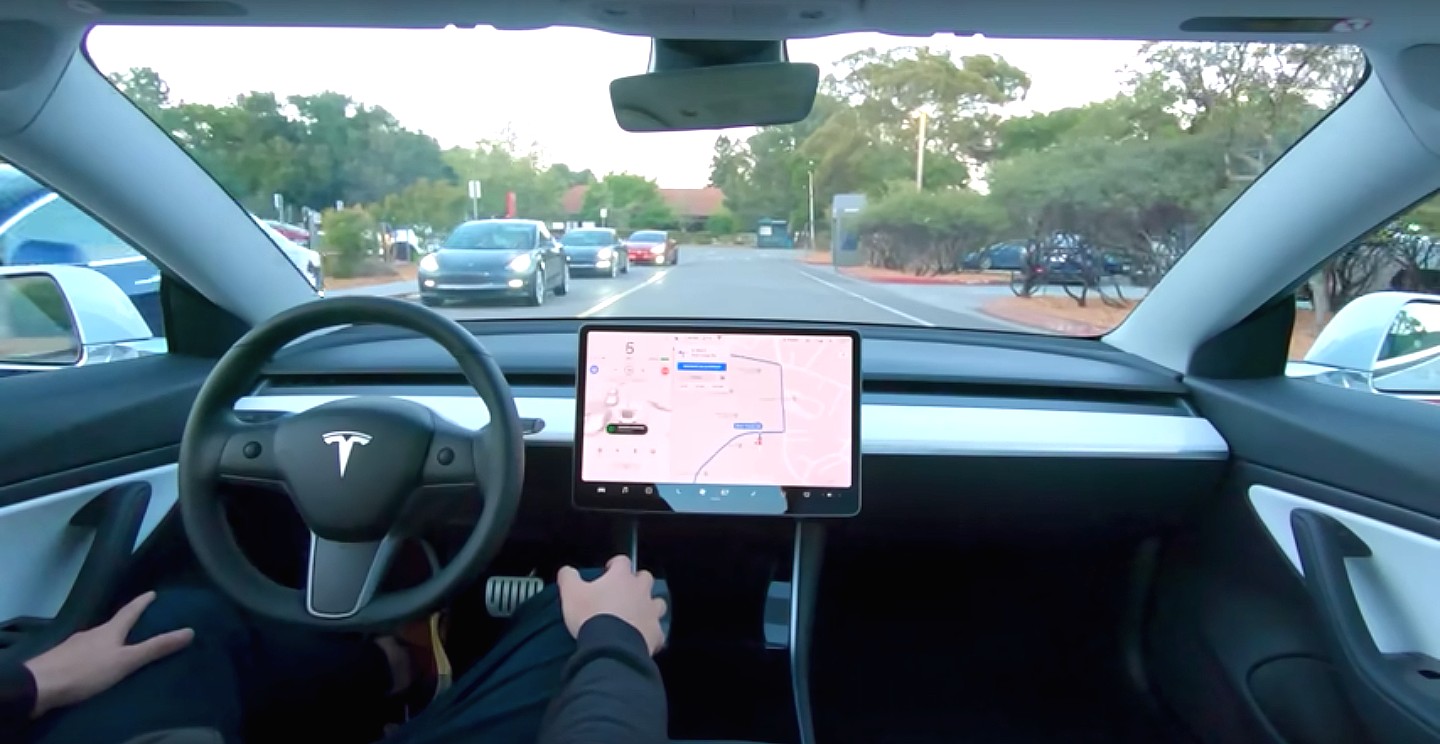
Tesla is launching a crazy Full Self-Driving free trial, which will enable owners who have not purchased the suite outright to try it for 30 days.
There are a handful of stipulations that will be needed in order for you to qualify for the free trial, which was announced on Thursday night.
Tesla said the trial is for v14, the company’s latest version of the Full Self-Driving suite, and will be available to new and existing Model S, Model 3, Model X, Model Y, and Cybertruck owners, who will have the opportunity to try the latest features, including Speed Profiles, Arrival Options, and other new upgrades.
🚨 Tesla is launching a free 30-day trial of Full Self-Driving in North America for owners.
It includes every model, but you need v14.2 or later, and you cannot have already purchased the suite outright. https://t.co/8CNmxxOkVl
— TESLARATI (@Teslarati) November 27, 2025
You must own one of the five Tesla models, have Full Self-Driving v14.2 or later, and have an eligible vehicle in the United States, Puerto Rico, Mexico, or Canada.
The company said it is a non-transferable trial, which is not redeemable for cash. Tesla is reaching out to owners via email to give them the opportunity to enable the Full Self-Driving trial.
Those who are subscribed to the monthly Full Self-Driving program are eligible, so they will essentially get a free month of the suite.
Once it is installed, the trial will begin, and the 30-day countdown will begin.
Tesla is making a major push to increase its Full Self-Driving take rate, as it revealed that about 12 percent of owners are users of the program during its recent earnings call.
Tesla CFO Vaibhav Taneja said during the call:
“We feel that as people experience the supervised FSD at scale, demand for our vehicles, like Elon said, would increase significantly. On the FSD adoption front, we’ve continued to see decent progress. However, note that the total paid FSD customer base is still small, around 12% of our current fleet.”
Earlier today, we reported on Tesla also launching a small-scale advertising campaign on X for the Full Self-Driving suite, hoping to increase adoption.
Tesla Full Self-Driving warrants huge switch-up on essential company strategy
It appears most people are pretty content with the subscription program. It costs just $99 a month, in comparison to the $8,000 fee it is for the outright purchase.
News
Tesla Full Self-Driving warrants huge switch-up on essential company strategy

Tesla Full Self-Driving has warranted a huge switch-up on an essential company strategy as the automaker is hoping to increase the take rate of the ADAS suite.
Unlike other automotive companies, Tesla has long been an outlier, as it has famously ditched a traditional advertising strategy in favor of organic buzz, natural word-of-mouth through its production innovation, and utilizing CEO Elon Musk’s huge social media presence to push its products.
Tesla has taken the money that it would normally spend on advertising and utilized it for R&D purposes. For a long time, it yielded great results, and ironically, Tesla saw benefits from other EV makers running ads.
Tesla counters jab at lack of advertising with perfect response
However, in recent years, Tesla has decided to adjust this strategy, showing a need to expand beyond its core enthusiast base, which is large, but does not span over millions and millions as it would need to fend off global EV competitors, which have become more well-rounded and a better threat to the company.
In 2024 and 2025, Tesla started utilizing ads to spread knowledge about its products. This is continuing, as Full Self-Driving ads are now being spotted on social media platforms, most notably, X, which is owned by Musk:
NEWS: Tesla is running paid advertisements on X about FSD (Supervised). Here’s an ad they started running yesterday: pic.twitter.com/IHVywLMyTd
— Sawyer Merritt (@SawyerMerritt) November 25, 2025
Interestingly, Tesla’s strategy on FSD advertising is present in Musk’s new compensation package, as the eleventh tranche describes a goal of achieving 10 million active paid FSD subscriptions.
Full Self-Driving is truly Tesla’s primary focus moving forward, although it could be argued that it also has a special type of dedication toward its Optimus robot project. However, FSD will ultimately become the basis for the Robotaxi, which will enable autonomous ride-sharing across the globe as it is permitted in more locations.
Tesla has been adjusting its advertising strategy over the past couple of years, and it seems it is focused on more ways to spread awareness about its products. It will be interesting to see if the company will expand its spending even further, as it has yet to put on a commercial during live television.
We wouldn’t put it out of the question, at least not yet.
News
Tesla Model Y Standard: first impressions from a Premium owner
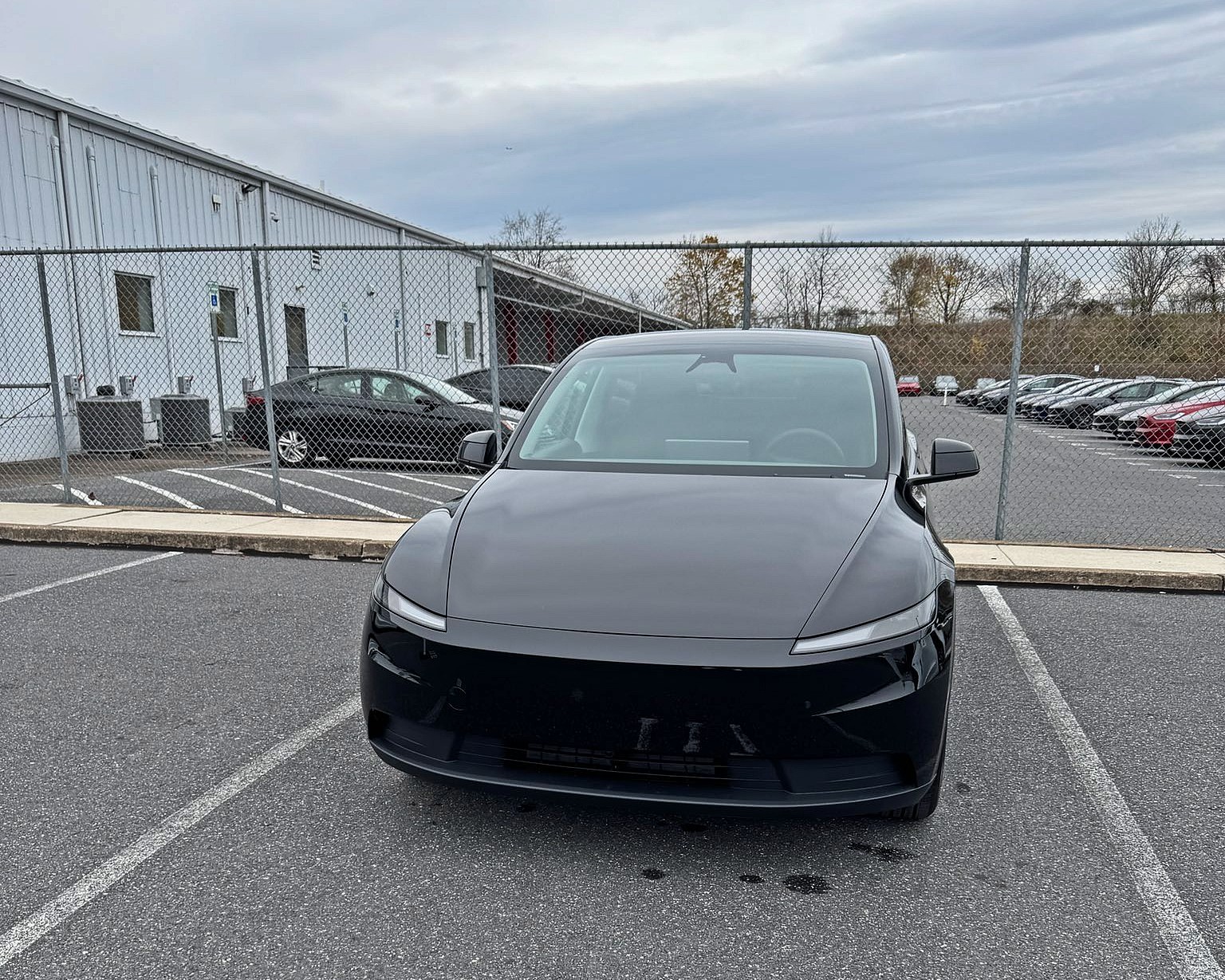
Tesla was nice enough to hook us up with the new Model Y “Standard” trim for a few days, and while we’ll be sure to fill you in on the full experience in the coming days, there are a lot of differences we noticed right off the bat, which make the ownership experience different from the “Premium” configuration level.
I purchased a Model Y Long Range All-Wheel-Drive back in August and took delivery just two weeks later. Through the first three months of owning my car, I’ve come to love so many things about the Tesla experience.
I traded my ICE vehicle for a Tesla Model Y: here’s how it went
However, I was interested in experiencing the affordable trim and seeing whether I would miss any of the voided features of the “Premium” Model Y.
Through the first 24 hours, here are my first impressions of the Model Y Standard as a Premium trim level owner:
Overall Aesthetic
The lack of a light bar is not something that is a dealbreaker. In fact, I would argue that the Model Y Standard’s more traditional headlight design is just as pleasing from an aesthetic standpoint.
The car is great looking from top to bottom; there are not a substantial number of differences besides the lack of a lightbar on both the front and the back of the car.
Overall, it is a very sleek vehicle, but the major changes are obviously with the interior.
Interior Changes
This is where the big differences are, and some of the things I’ve gotten used to in the Premium are not included. If I didn’t have a Premium Model Y already, I’m not sure I’d miss some of the things that are not present in the Standard trim, but I believe I’d get annoyed with it.
First impressions:
✅ Interior is excellent. I definitely miss the additional storage already that is available in my Premium. I could definitely get over it though
✅ Noticeable step down in sound system. Long Time by Boston absolutely cranks in the Premium; it’s still very… https://t.co/JNWvxTd8p1
— TESLARATI (@Teslarati) November 25, 2025
Storage
The Premium has a large storage compartment between the cupholders and the wireless charger, which is not present in the Standard trim. Instead, it is more like the Cybertruck, as there is a pass-through and floor storage.
I think that the pass-through is nice, but the additional storage is something I take advantage of, especially as someone who films Full Self-Driving videos, which requires hauling mounts, GoPros, and other accessories.
The sleekness of the Premium trim is also something I prefer; I really enjoy having the ability to close those compartments and cover the cupholders.
Obviously, this is a really trivial issue and not something that is substantially impactful from an ownership experience. If I weren’t already an owner, I am not sure I’d even have something to complain about.
Material Differences
The Premium trim seats are completely Vegan Leather, which I really do like, even as someone who doesn’t really love leather seats due to their temperature dependency.
The Standard trim features a Textile and Vegan hybrid, which has half of the seat a different material than the other.
The material is very similar to what I had in my previous car, a Bronco Sport. It was very durable, easy to clean, dried quickly, and hid a lot of things that leather does not, like oils from your skin, which constantly require attention to keep your interior looking fresh.
The wireless charger is also a different material, as the Premium features an Alcantara material on that. The Standard has a rubberized and textured backing, which looks good, too. They’re both more than suitable.
Other Missing Features
The Standard lacks a few minor things, most noticeably is the ambient lighting. The biggest change, however, and something I really miss, is the glass roof.
A lot of people told me that when I got my Model Y, I wouldn’t even notice the glass roof after a few weeks. That could not be further from the truth. I look out of it all the time, and it’s one of my family’s favorite parts of the car.
My Fiancè and I really love parking and watching Netflix when we pick food up, especially when it’s raining, because the glass roof gives such a great view.
We also loved it as Fall arrived, because it was great to look at the foliage.
Buy the Tesla.
Enjoy the glass roof. pic.twitter.com/r2GDyOEEWu
— TESLARATI (@Teslarati) October 28, 2025
Bigger Differences
There are also a handful of very noticeable differences from the overall cabin experience, especially with the sound system.
Much Weaker Sound System
The Model Y Standard has just 7 speakers and 1 amp, with no subwoofer. This is a significant step down from the 13-15 speakers in the Premium Long Range AWD Model Y, the 2 amps it comes with, and 1 subwoofer in the trunk.
I usually like to listen to Long Time by Boston to test out a sound system, and it was noticeably weaker in the Standard. It was missing a big portion of the umph that is provided by the Premium’s sound system.
Cabin Noise
It feels like the Cabin Noise is definitely more noticeable in the Standard, which is something I really love about my Model Y. It is able to dampen so much road noise from louder cars, and I don’t feel as if it is very quiet in the Standard.
This is perhaps the biggest make-or-break for me with this car. I truly have been spoiled by how quiet the cabin is in the Premium, and it’s due to the lack of acoustic-lined glass in the Standard.
I will be doing a more in-depth review of the Model Y Standard, especially with ride quality, later this week.
